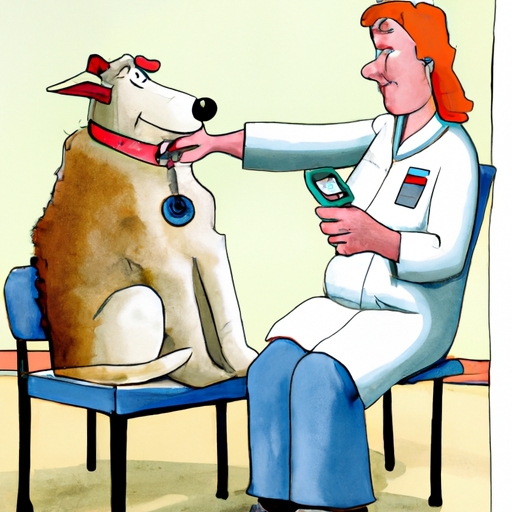“`markdown
How to Take Your Dog’s Temperature
As a caregiver for your beloved furry companion, it’s important to know how to accurately monitor their health. One key aspect of this is knowing how to take your dog’s temperature.
Why is it Important to Know Your Dog’s Temperature?
Dogs, like humans, can fall ill, and one of the primary indicators of this is a rise or drop in body temperature. By regularly monitoring your dog’s temperature, you can catch potential health problems early, and seek veterinary assistance before the issue worsens.
What is a Normal Temperature for a Dog?
On average, a dog’s normal body temperature ranges between 101 and 102.5 degrees Fahrenheit (38.3 to 39.2 degrees Celsius). If your dog’s temperature falls below 99 degrees or rises above 103 degrees, it’s time to consult a vet.
Here’s a handy table for quick reference:
| Temperature (Fahrenheit) | Temperature (Celsius) | Health Status |
|---|---|---|
| Below 99 | Below 37.2 | Potential Hypothermia |
| 101 – 102.5 | 38.3 – 39.2 | Normal |
| Above 103 | Above 39.4 | Potential Fever |
How to Take Your Dog’s Temperature
Taking your dog’s temperature might sound daunting, but with a little preparation and patience, it can be done with minimal stress for both you and your pet. Here’s a step-by-step guide:
-
Prepare the Thermometer: You will need a digital rectal thermometer made specifically for pets. These are available at most pet stores.
-
Lubricate the Thermometer: Apply a small amount of petroleum jelly or other safe lubricant to the end of the thermometer.
-
Position Your Dog: Have your dog stand or lie on their side. It’s important that they stay still, so you may need a second person to help hold them.
-
Insert the Thermometer: Gently insert the thermometer into your dog’s rectum, about one inch for small dogs and two inches for larger dogs.
-
Wait for the Reading: Hold the thermometer in place until it beeps, usually around 60 seconds.
-
Clean and Store the Thermometer: Always clean the thermometer after use with isopropyl alcohol or warm, soapy water, and store it safely away from your pet’s reach.
What to Do if Your Dog’s Temperature is Abnormal
If your dog’s temperature is outside the normal range, don’t panic. While it’s a cause for concern, it’s not an immediate emergency. Contact your vet to discuss the symptoms and get advice on the next steps.
Frequently Asked Questions
Q: Can I use a human thermometer on my dog?
A: While it’s technically possible, it’s not advised. Pet thermometers are designed to take rectal temperatures, which are more accurate in dogs.
Q: How often should I take my dog’s temperature?
A: Unless your dog is showing signs of illness, there’s no need to take their temperature regularly. Instead, focus on monitoring their behavior and physical condition.
Q: My dog hates having their temperature taken. What can I do?
A: It can be stressful for dogs at first. Try to make the experience as calm and comfortable as possible, and reward your dog afterward with a treat or their favorite game.
“`



